Content
Published:
This is an archived release.
Labour immigration remains high despite fall
A total of 49 900 persons with non-Nordic citizenship immigrated to Norway in 2014. This is a decrease of 4 600 persons compared with 2013, and is the lowest number of immigrations since 2009. Labour immigration showed the highest decrease, but is nevertheless still high. The number of refugees from Syria saw a significant increase compared with the previous year.
| 2014 | Change in per cent | Total immigration since 1990 | ||
|---|---|---|---|---|
| 2013 - 2014 | 2004 - 2014 | |||
| Total | 49 881 | -8.5 | 134.8 | 688 229 |
| Labour | 21 367 | -9.2 | 425.9 | 230 159 |
| Family | 16 212 | -7.1 | 75.4 | 250 048 |
| Refugee | 6 999 | -5.1 | 37.7 | 131 949 |
| Education | 5 019 | -14.26 | 82.0 | 71 828 |
| Other | 249 | -17.0 | 149.0 | 3 514 |
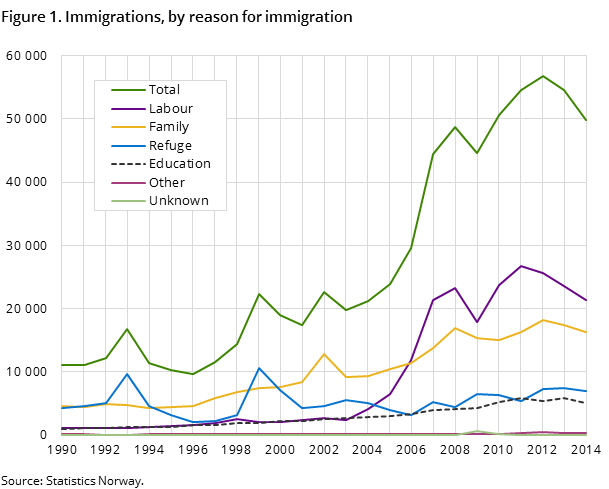
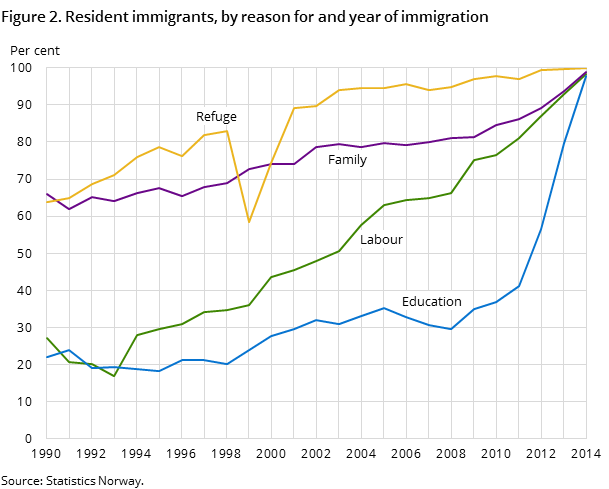
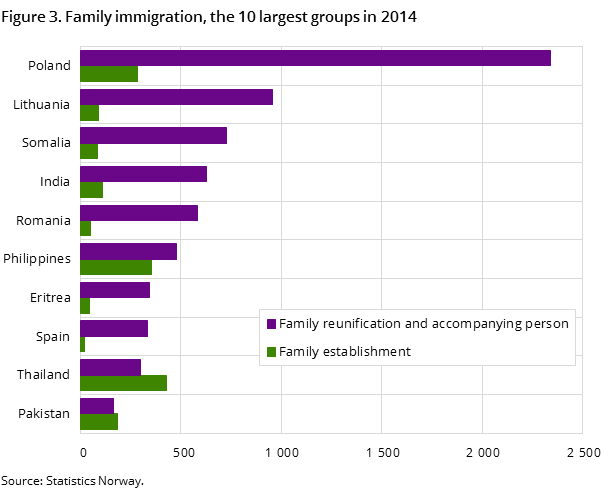
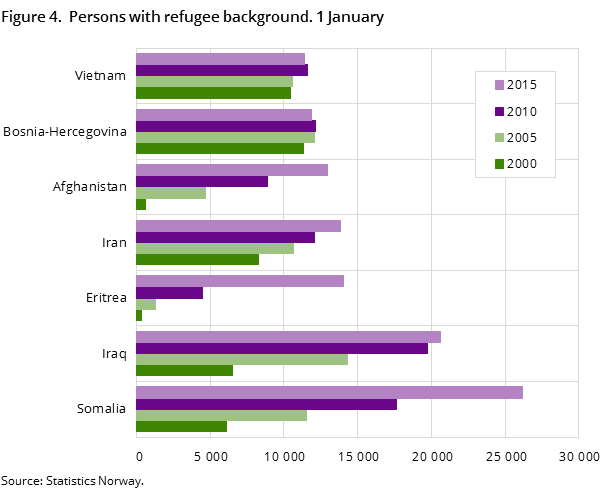
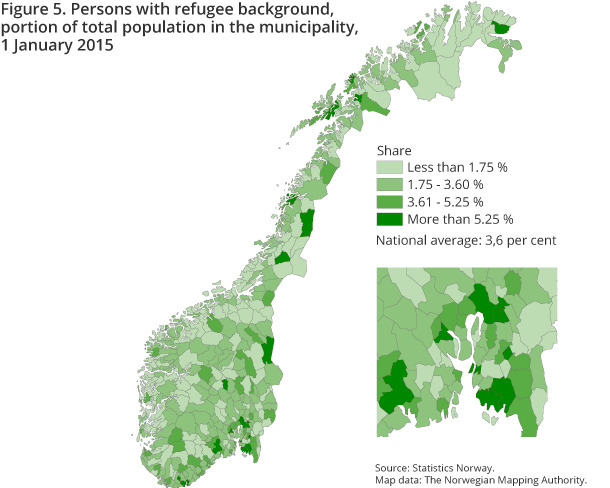
Labour was the reason for immigration for 43 per cent of non-Nordic immigrants in 2014, and a third came as family immigrants. Fourteen and ten per cent came as refugees and students respectively.
Reduced labour immigration
In 2013, labour immigration decreased by about 9 per cent from 2013 but was still high. A total of 21 400 persons from non-Nordic countries immigrated due to labour in 2014. Two out of three of these came from the new EU countries. Labour immigrants from Poland made up the largest group in 2014, with 6 600 persons. Lithuanian labour immigrants followed next with 3 200 persons.
Fewer family immigrants
Family immigration in 2014 decreased by about 7 per cent compared with 2013 but was still high. A total of 16 200 persons immigrated for family reasons. The two largest groups of family immigrants were Polish (2 600) and Lithuanians (1 000).
Syrian refugees a new, large group
Compared with 2013, 300 fewer persons were registered as refugees in 2014. Citizens from Eritrea, Syria and Somalia constituted the three largest groups of refugees, with 2 300, 2 000 and 700 immigrants respectively. The number of refugees from Syria saw a significant increase, up 1 200 from the previous year.
5 000 persons immigrate for education
A total of 5 000 persons immigrated in 2014 due to education or cultural exchange. This was a decrease of 800 persons compared with 2013. There were many immigrants from the Philippines in this group; 1 100 persons, or 22 per cent. The reason for the large number of registered persons from the Philippines is that au pair permits are also considered to be a type of education permit.
High portion of residents
A total of 688 000 persons with non-Nordic citizenship immigrated to Norway between 1990 and 2014, and 75 per cent of these were still living here at the beginning of 2015. Of those who immigrated as refugees, 85 per cent were still living in the country on 1 January 2015. The corresponding percentage for those who immigrated for education was just 41 per cent.
188 100 with refugee background
A total of 188 100 persons with a refugee background were living in Norway on 1 January 2015. This made up 3.6 per cent of the total population and 28 per cent of immigrants in Norway. Somalia is still the largest group of persons with a refugee background with 26 100, followed by Iraq (20 600) and Eritrea (14 100).
More about 'immigrants by reason for immigration'Open and readClose
The statistics on reason for immigration give a breakdown of all persons who have immigrated to Norway for the first time, and were registered as a resident in the year, by reason for immigration. The person no longer has to be a resident. The breakdown is based on first citizenship. A person cannot be included in the statistics for two different years. The statistics include the years 1990-2013. More information can be found in About the statistics.
More about 'persons with a refugee background' Open and readClose
The statistics on persons with a refugee background include all persons with a refugee background who were residents on 1 January in the current year. The term 'persons with refugee background' includes all persons whose reason for immigration status is 'refugee' and all persons with 'family' status who have been reunited with a family member. The breakdown is based on country of birth. A person with a refugee background will be included in the statistics every year that they are a resident. The statistics have been published since 1998. More information can be found in About the statistics .
Contact
-
Statistics Norway's Information Centre
E-mail: informasjon@ssb.no
tel.: (+47) 21 09 46 42
-
Oppdrag innvandring
E-mail: oppdraginnvandring@ssb.no
-
Mads Ivar Kirkeberg
E-mail: mads.ivar.kirkeberg@ssb.no
tel.: (+47) 40 81 13 21
-
Frøydis Strøm
E-mail: froydis.strom@ssb.no
tel.: (+47) 40 81 13 17
